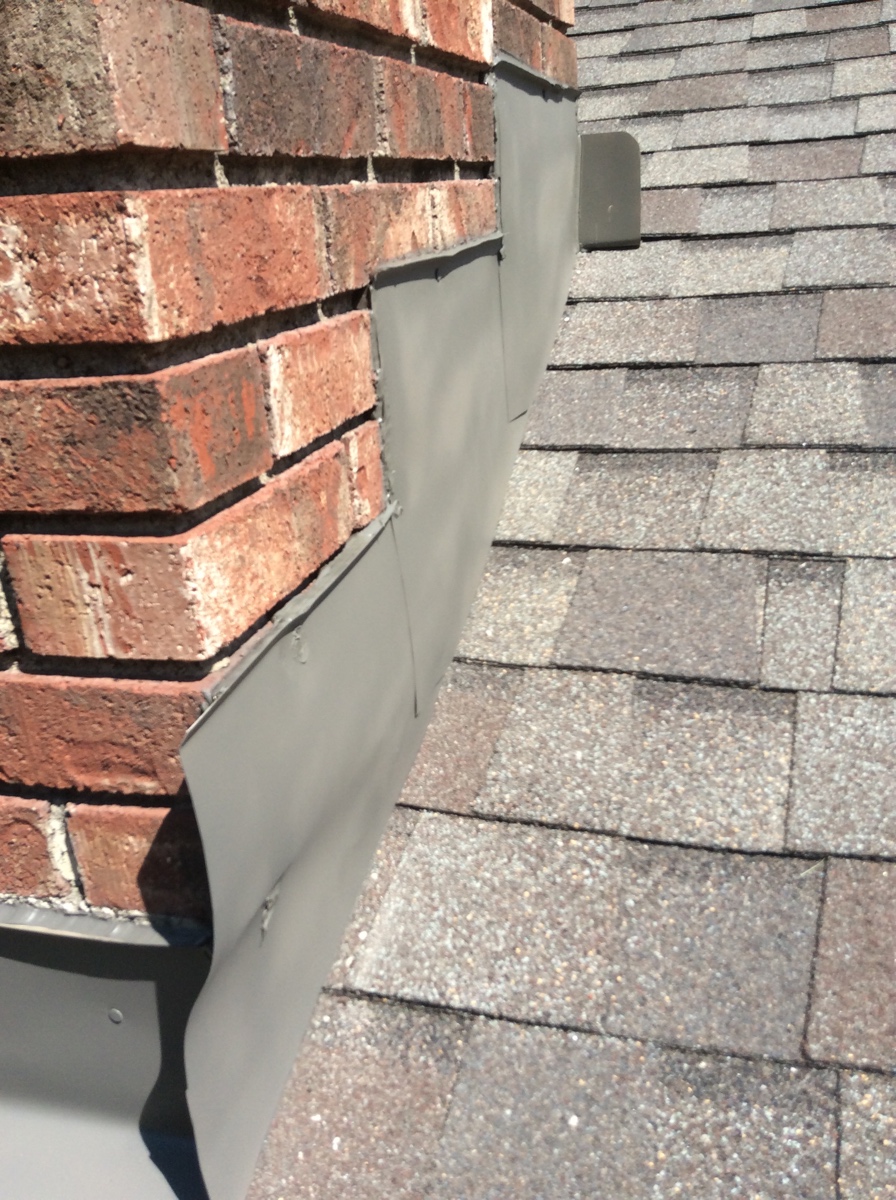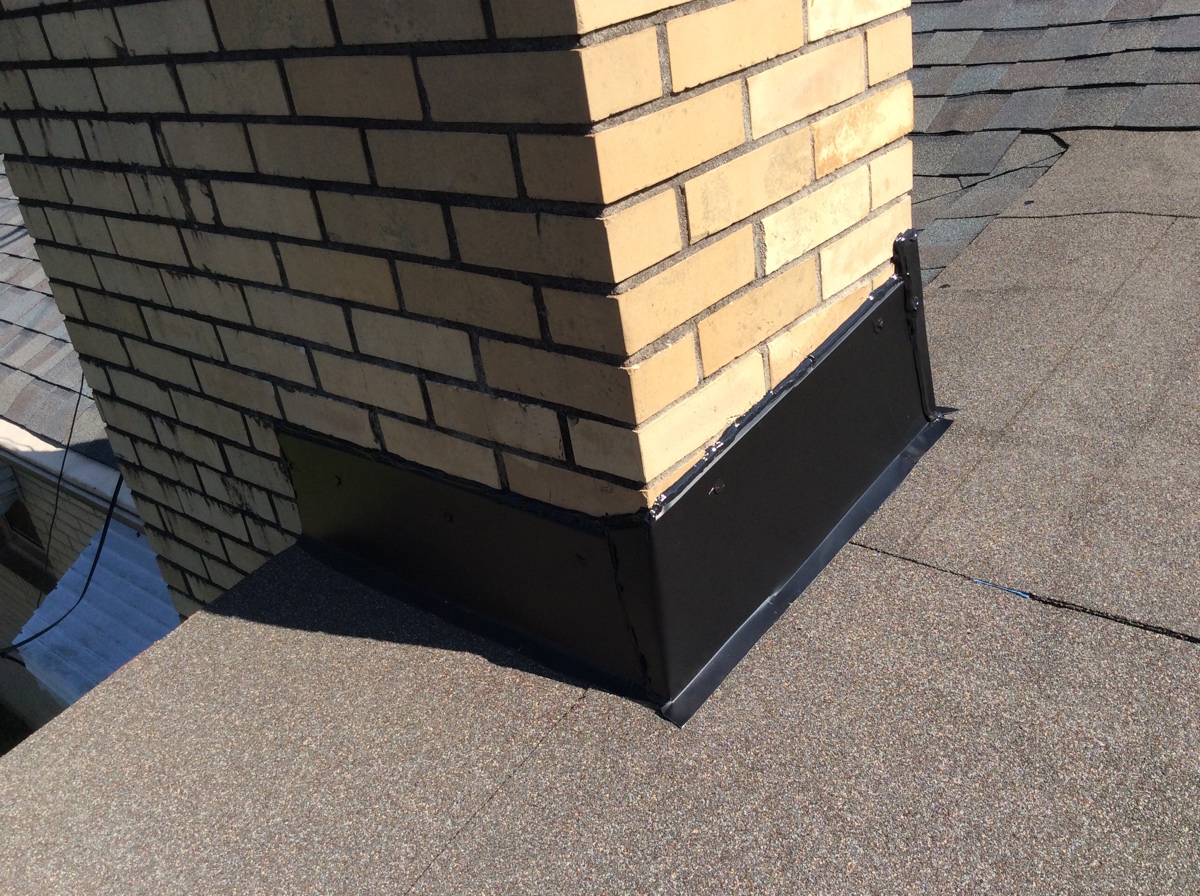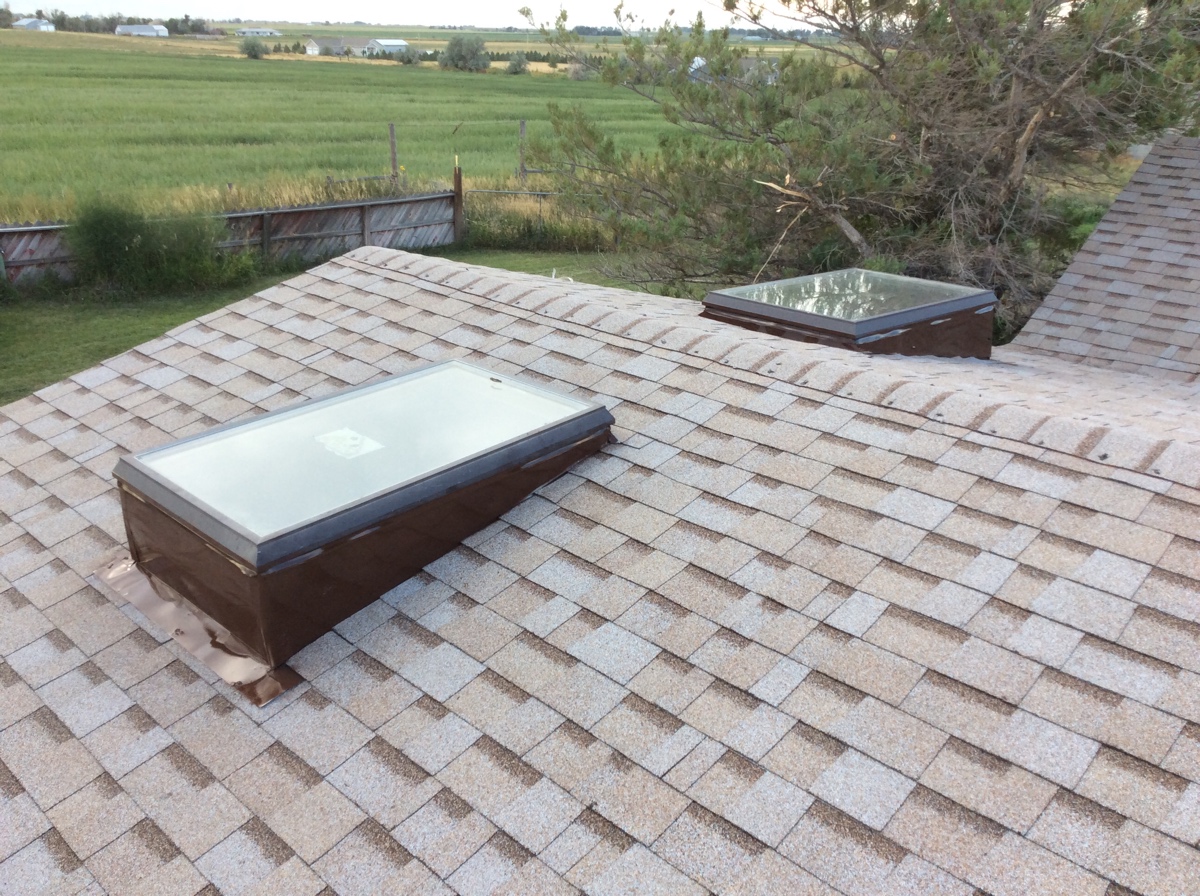There are many elements within your roofing system that play a specific role in keeping you warm, safe and dry. When it comes to the latter, you can thank your flashing. Flashing provides your home with extra protection from water leaks, mold and moisture by directing water around vulnerable areas of your roof’s surface that intersect with its projections. We caught up with Aspen project consultants Adam W. and Lucas M. for their expertise on the important roofing component.
Take a look at their outline of the different types below.
Step flashing
Step flashing is an L-shaped, usually 5×7″ piece of metal that is placed under each shingle that intersects with a wall or chimney. It is called “step flashing” because each flashing piece and shingle is “stepped” on top of each other up the wall. Step flashing often doesn’t need replacement, unless the individual pieces slip out of place, rust, or fail to keep water out. If the wall which intersects with the roofline is brick, then the step flashing must be covered by counter flashing.

Counter flashing
Counter flashing, or apron flashing, covers the step flashing like an apron. If the wall or chimney that intersects with the roof line is brick, then the counter flashing must be cut into the respective brick wall or chimney and then sealed. Counter flashing laps over the exposed step flashing to keep water from getting between the wall and the step flashing. It rarely needs replacement, unless the counter-flashing is not cut into the brick wall or chimney.

Flashing kits
These flashing kits usually come with pre-fabricated penetrations installed into the roofing system, like a skylight or solar tube. Often coming with a rain diverter and a set of step flashing specifically measured and designed for the pre-fabricated penetration. If a skylight is leaking or is damaged, then the flashing kit might need replacement. Otherwise it is best to not disturb the system and re-use the flashing.

Valley metal
Valley metal, or W-pan, smoothly and quickly diverts water away from shingles and down into gutters instead. It is the smoothest and quickest of available valleys.

Flashing is made from durable materials like galvanized steel, copper, aluminum and stainless steel. There are also PVC-based options that are less expensive but still get the job done. Over time, flashing may deteriorate and oxidize due to weather and sun contact. If water and moisture seep in, this could lead to deteriorated building materials, mold and structural damage. It’s important to inspect your roof’s flashing as well as its shingles about every 6 months. For a thorough roof inspection, schedule an appointment with your local Aspen project consultant today!